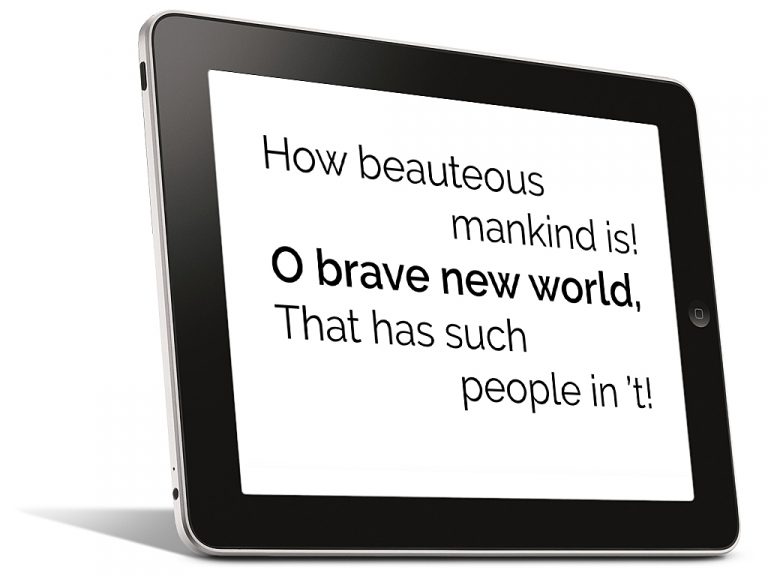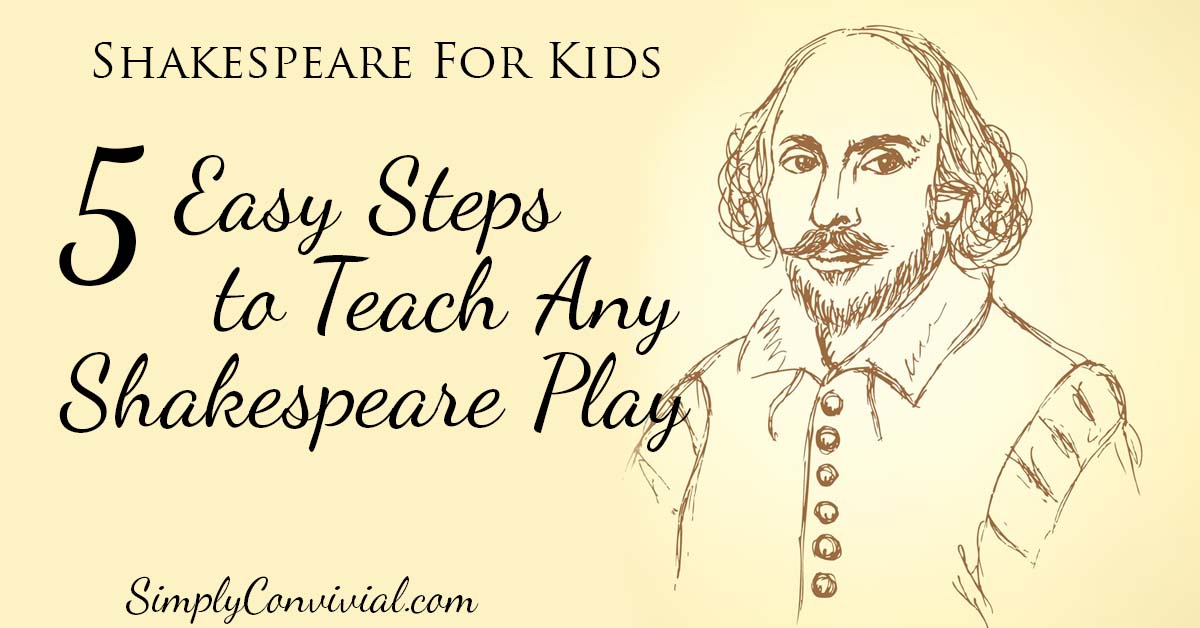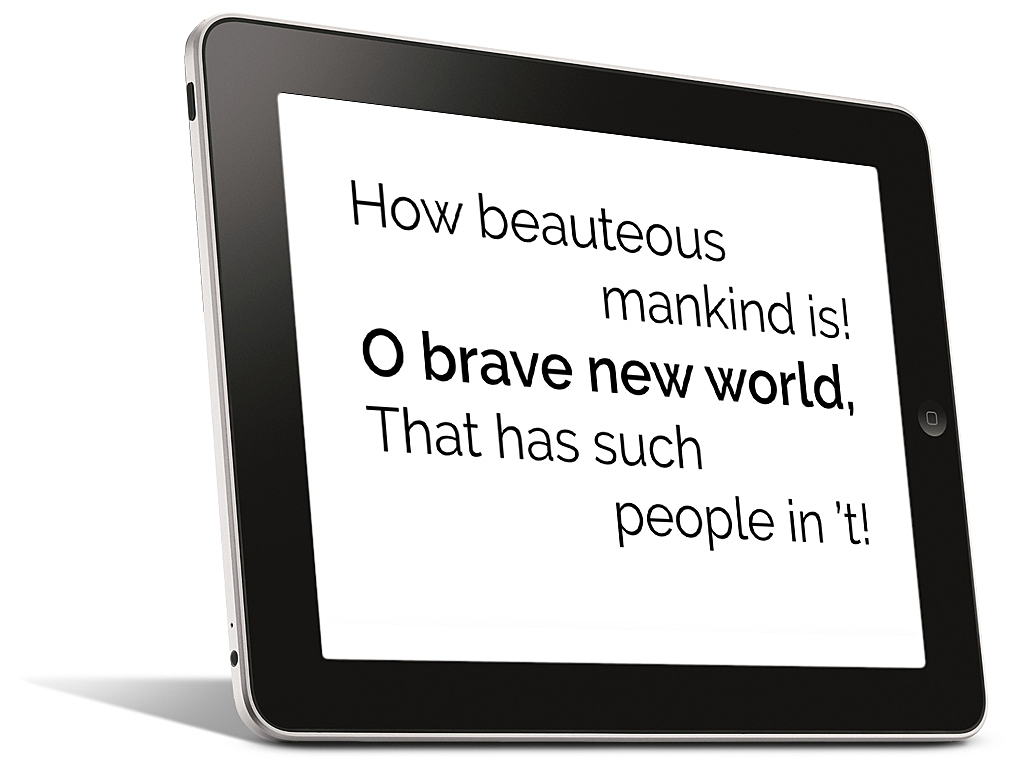Yes, Macbeth is dark and gruesome and not the easiest Shakespeare story to relate to. The Scottish thane Macbeth listens to witches who clearly should not be trusted and nothing good comes of it – listening to them, in fact, poisons his mind and damns him on earth to a life without sleep and without remorse. Blood will have blood, and by the time the end of the play rolls around, everyone cheers for Macduff’s final blow that strikes the tyrant down.
If you’re teaching kids close in age, you might want to wait to read Macbeth until they are in their teens. However, in our homeschool this year, both our group of teens and our elementary kids with students as young as 7 are relishing Macbeth. Sometimes, the more wicked the bad guy is, the more enjoyable it is to hate him and watch for his inevitable downfall. Macbeth knows he is doing wrong every step of the way and consciously chooses to silence his conscience. There is no gray morality in Macbeth – he lets evil into his ears and it blackens his heart. Children brought up on Greek myths and original fairy tales will not have a problem with the morality spectacle that is Macbeth.
Lesson Plans for Shakespeare’s Macbeth
Here is the 5-step plan with resources I used to enjoy Macbeth with my homeschool co-op group.
1. Introduce Macbeth to the kids.
We don’t just dive into the full text of the play or even watch a movie to get a feel for the play. Shakespeare is so good that spoilers are no concern. Reading a picture book version, even to high school kids – even for ourselves! – is a great way to get to know the characters, to understand the action, and to taste the flavor. When we come at Shakespeare’s text after encountering it first in a picture book, we find it easier to follow the language and keep track of the characters and what they each want.
As far as Shakespeare retellings go, Bruce Coville is the gold standard.
2. Memorize famous lines from Macbeth.
Yes, even before we watch a movie or open the book, we memorize some lines. Memorizing lines not only makes us comfortable with Shakespeare’s language by putting it in our mouths, it gives the kids watch-words and speeches that, when they appear in the movie or the text, pop out. The burst of recognition and also ownership membership gives keeps them on board with the flow of the story as it unfolds in its original language.
For Macbeth, I chose these sections, of course beginning with the famous “Double, double, toil and trouble.”
In the cauldron boil and bake;
Eye of newt and toe of frog,
Wool of bat and tongue of dog,
Adder’s fork and blind-worm’s sting,
Lizard’s leg and howlet’s wing,
For a charm of powerful trouble,
Like a hell-broth boil and bubble.
Double, double, toil and trouble; Fire burn and cauldron bubble
And from Macbeth’s musings about his ambition v. his conscience:
If it were done when ’tis done, then ’twere well
It were done quickly. If th’ assassination
Could trammel up the consequence, and catch
With his surcease success: that but this blow
Might be the be-all and the end-all, here,
But here upon this bank and shoal of time,
We’d jump the life to come. But in these cases
We still have judgement here, that we but teach
Bloody instructions which, being taught, return
To plague th’inventor. This even-handed justice
Commends th’ ingredients of our poisoned chalice
To our own lips. He’s here in double trust:
First, as I am his kinsman and his subject,
Strong both against the deed; then, as his host,
Who should against his murderer shut the door,
Not bear the knife myself.
And we can’t forget Lady Macbeth:
Yet do I fear thy nature,
It is too full of the milk of human kindness
to catch the nearest way.
Finally, how a scarred conscience feels about life:
Out, out, brief candle!
Life’s but a walking shadow, a poor player that struts and frets his
hour upon the stage and then is heard no more. It is a tale told by an
idiot, full of sound and fury, signifying nothing.
One I wish I had included was Macbeth’s admission: “Come what may time and the hour run through the roughest day.” It’s good to have perspective. Unfortunately, that’s not what Macbeth actually had.
Sign up and get instant access to all the Shakespeare memory sheets and lesson plans I’ve created to date.

3. Watch a movie or production of Macbeth.
I can’t be of much help here, unfortunately. I previewed three movie versions, only one of which I deemed appropriate to show to children. That is a stage production of Macbeth with Ian McKellen and Judi Dench, which sounds very promising because both are incredible Shakespeare actors, but the review from my seven-year-old as he walked off one-third through was: “I like Macbeth, but this is just people talking in a dark room.” Yes, it is rather.
We were able to see a live local performance by a Shakespeare troupe, so I had stopped my scouring of reasonably priced Macbeth productions. I see now the McKellen Macbeth is expensive; it is not worth it. Don’t be tempted.

I watched the new Macbeth with Michael Fassbender, which was a quite-abridged-Macbeth meets Braveheart version. It would be a good movie for an adult audience who didn’t really start with a Shakespeare affinity. But the witches don’t even double-double-toil-and-trouble. They are not clearly evil, but portrayed more as ambiguous forces of fate. The other version I previewed was with Patrick Stewart, which was a fascinating set: Macbeth as Soviet Russia. It worked rather well. However, it was alarmingly violent and visually gruesome in ways that are not for the faint of stomach and not for children. It would be interesting for an adult who enjoys comparing Shakespeare productions, but I’d never recommend it.
There are several other versions out there I did not purchase or preview. If you have feedback on any others, please leave your comments and review in the comments section! I’d love to have an appropriate movie version.
4. Listen to Macbeth while reading it.
Yes, Shakespeare was drama and meant to be performed and seen, but it is also the most rollicking English that should be relished with the eye on the printed word and not just on costumes. If you only see and never read Shakespeare, you are missing out. And we do not want our children to miss out. So we read. Some give parts and read aloud the drama as a cooperative effort. We, however, enjoy the help of actors even with our reading.
During our class time, we each follow along in our own copies while listening to the Arkangel Shakespeare audio version of Macbeth. It is complete with sound effects and different actors reading the different characters. It has musical interludes between scenes to set the mood, but most of all it is read with the accent and flair that makes it easier to understand.
I pick up cheap paperbacks (or even hardbacks) of individual plays as I come across them at thrift stores or library sales, but then I fill in the quantity we require for each to have his own copy with the Dover Thrift editions. Not only are they cheap, but they also have no explanatory notes to distract (or explain too much).
5. Play Macbeth.
We’ve read a lot of Shakespeare plays with this format now, but for some reason, Macbeth has captured the kids’ imaginations more than any other. Maybe it’s the hell-broth, maybe it’s the damned spot, but it’s gotten at least as much if not more free-play acting than Midsummer Night’s Dream (fairies + guy getting a donkey head make that one ever-popular).
Macbeth does have dramatic scenes that are not too difficult to grasp, to read, and to bring alive even as a small band of children. My 10-year-old and 7-year-old dramatically read aloud and acted several times with the picture book as their prompter. When it naturally seeps into free time like that, there’s no need to bring the structure of requirements and school officiousness to bear.
If, however, Macbeth doesn’t incite your children to spontaneous gatherings of newt eyes, you might try reading a scene, either from the original or from the picture book, and have them act it out in the room while you read. Or as you read or listen to the audio version, let them build scenes and reenact with Duplo or Lego people.
Macbeth also lends itself to artistic representation. I like asking each student to draw their favorite scene. Older children must find and copy a quote to include with their illustration. Then they show their work and the others have to tell about the scene on display.
Artistic, personal interaction, whatever the medium, builds the love, which is what we’re after here. The time will come later to study and analyze. Before high school (and even in high school), first we build the taste and affection.
It will happen much more naturally and much more deeply than you might think.
Shakespeare Lesson Plans
As we study Shakespeare plays together in our homeschool, I am making available our lesson plans and resource lists. Here are the links to each of the plays we’ve studied so far. Included in each one is a downloadable pdf set with not only the lesson plans, but also the printable quote cue pages we use for memorizing select lines from each play!
- How to teach Shakespeare to kids in 5 easy steps
- Comedy of Errors Lesson Plans
- Henry V Lesson Plans
- Hamlet Lesson Plans
- Julius Caesar Lesson Plans
- Taming of the Shrew Lesson Plans
- The Tempest Lesson Plans
- Macbeth Lesson Plans
- Merchant of Venice Lesson Plans
- A Midsummer Night’s Dream Lesson Plans
- Much Ado About Nothing Lesson Plans
- Mystie chats about enjoying Shakespeare in your homeschool on Your Morning Basket with Pam Barnhill







My young boys at 7 and 5 really enjoyed studying Macbeth in preparation for seeing a local shakespeare in the park performance. We read a short version, memorized lines, read a much longer abridged version and watched some of this production from 1998 https://www.youtube.com/watch?v=1urw2cGpMXs which I believe is geared toward high school students. It is set in a different time period, but it is watchable for kids and pretty exciting with tanks, guns, and more. We had a great time at the performance, especially when we heard the lines we had memorized!
I love your Shakespeare plans. We are about to start As You Like It and I wondered if you knew of any children’s book retellings of that play.